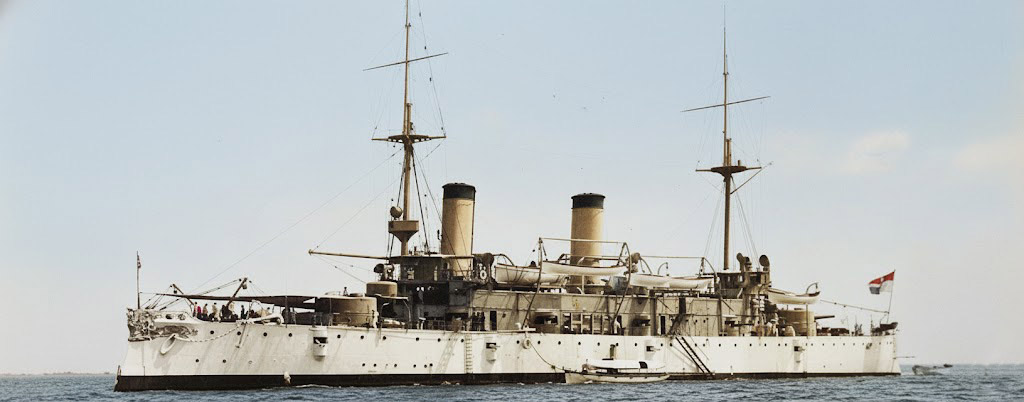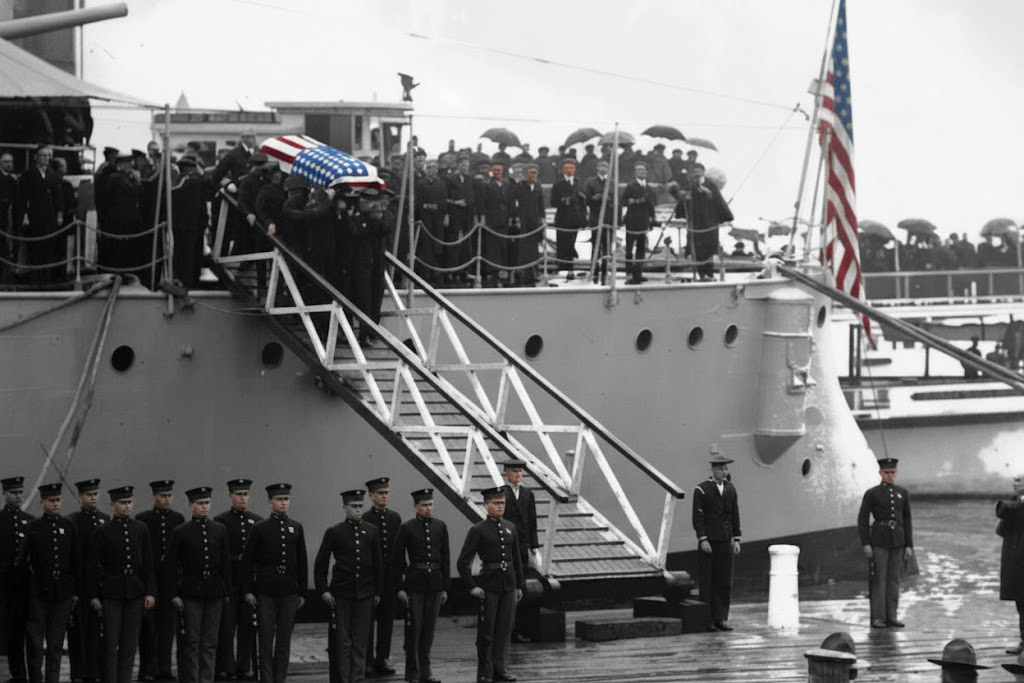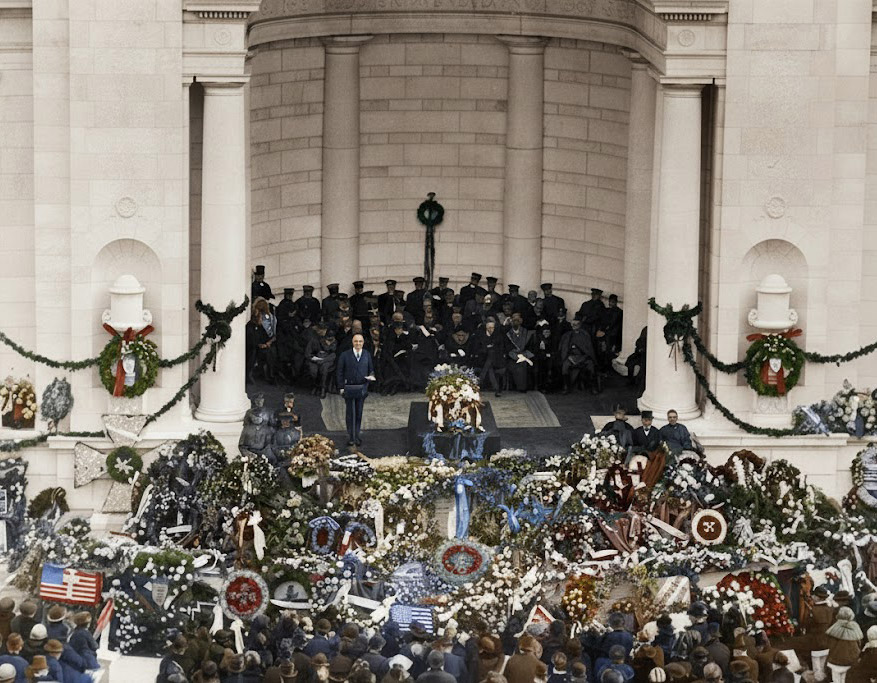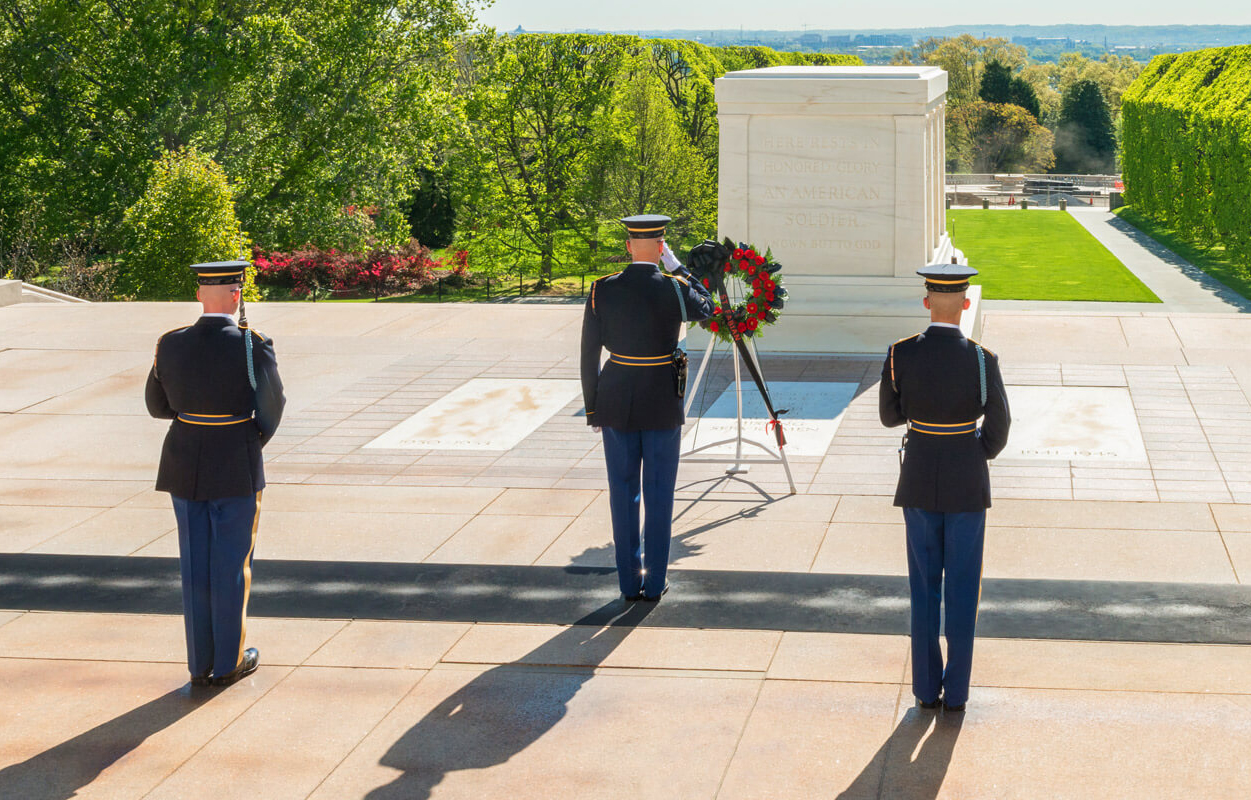On Oct. 3, 1921, the protected cruiser USS Olympia put to sea for a final assignment. She left with a reputation already carved into naval history and with orders that carried more weight than any broadside. Her destination was Le Havre, France. Her charge was a single coffin bearing the United States’ Unknown Soldier of World War I.
USS Olympia Prepares for a Historic Voyage
Olympia had been a headline from the day she touched water. Launched in 1895, she was the largest ship yet built on the West Coast. Designers gave her speed, armor, and heavy guns that invited comparison with the ships of Britain’s Royal Navy, the obvious yardstick of the era. It was fitting that such a storied vessel should carry this precious cargo.

In January 1898, Commodore George Dewey stepped aboard and hoisted his flag. Four months later, the United States was at war with Spain, and Dewey led the Asiatic Fleet toward the Philippines with Olympia in the lead. At Manila Bay, from her bridge, he gave the order to open fire. The Spanish squadron broke under American gunnery, and Marines from Olympia went ashore to silence the coastal batteries. News of the victory crossed the ocean faster than the ships that fought it. Dewey and Olympia returned as household names. Posters, parades, and a hero’s welcome followed. Then the long, steady work resumed.
The Unknown Soldier Crosses the Seas
Olympia trained midshipmen, showed the flag in distant harbors, and kept the routine that maintained American sea power. When World War I arrived, she did not run to the Western Front. She became the flagship of the U.S. Patrol Force and guarded the Atlantic coast. She carried soldiers of the Polar Bear Expedition to Arkhangelsk in 1918 during the Allied intervention in Russia, a cold and complicated mission far from the trenches of France. After that, she flew the flag as leader of the Mediterranean Squadron, then turned for home. Philadelphia became her pier, and it was from Philadelphia that she would sail once more for a special mission.

By 1921, lawmakers were looking for a way to honor the thousands who never came home from the Great War’s European trenches. They decided that one unidentified American would be returned to rest in Arlington National Cemetery, representing them all—”to bring home the body of an unknown American warrior who in himself represents no section, creed, or race in the late war and who typifies, moreover, the soul of America and the supreme sacrifice of her heroic dead.”
USS Olympia Faces the Atlantic With the Unknown Soldier
The tomb would be a national promise in stone: we will never forget the sacrifices you made, even if we cannot identify your remains. In October 1921, four sets of remains were dug up from what is today the Châlons-en-Champagne cemetery in France. Sgt. Edward F. Younger of Headquarters Company, 2nd Battalion, 50th Infantry, American Forces in Germany, selected which set of remains from the four would be reinterred at Arlington. When that was done, someone still had to come and take the Unknown Soldier home.

The voyage would be entrusted to the USS Olympia and the coffin to a detachment of United States Marines, but the Atlantic almost torpedoed the idea the moment the cruiser departed Le Havre. From there, Olympia ran into the trailing fists of two hurricanes. Swells rose to 20 and 30 feet and stayed there for most of the 15 days at sea. The casket could not be secured below, so it rode the storm on the open deck, lashed tight and guarded without pause. The Marines did not quit their station: They tied themselves to the deck and kept the watch through spray and wind while the ship climbed and fell and climbed again.
The Unknown Soldier Reaches Home
On Nov. 9, 1921, Olympia eased into Washington’s Navy Yard and fired a salute. The Unknown Soldier was carried from the deck of the ship to Capitol Hill, where he lay in state beneath the Capitol dome until Armistice Day.

When the 11th finally came, President Warren G. Harding led the interment at Arlington. Britain’s Admiral of the Fleet Lord Beatty stood in for King George V and presented the Victoria Cross to the American unknown, a gesture of respect from one nation’s dead to another’s guardian. The moment linked allies, theaters, and years of grief with a single medal placed on a flag.
Olympia returned to Philadelphia and the lines of her career finally came together. She was decommissioned in 1922. The Navy and the city chose memory over scrap. In 1957, the ship was restored to her original appearance, not as an ornament, but as a record you can walk through.

As for the Tomb of the Unknown, unfortunately, “The War to End All Wars” didn’t actually end all wars. American service members were killed and went missing during World War II, the Korean War, and the Vietnam War. Unknown soldiers were created to honor the dead, missing, and captured from each conflict. Today, the tomb is a solemn place, guarded day and night by the Army’s finest: Soldiers from the 3rd U.S. Infantry Regiment, known as “The Old Guard.”
Read About Other Military Stories
If you enjoyed learning about the journey of the Unknown Soldier and USS Olympia’s historic mission, we invite you to read the stories of other remarkable soldiers and their heroic deeds on our blog. In addition to our profiles of celebrities who served, we share military book reviews, veterans’ service reflections, famous military units and more on the TogetherWeServed.com blog. If you are a veteran, find your military buddies, view historic boot camp photos, build a printable military service plaque, and more on TogetherWeServed.com today.

0 Comments